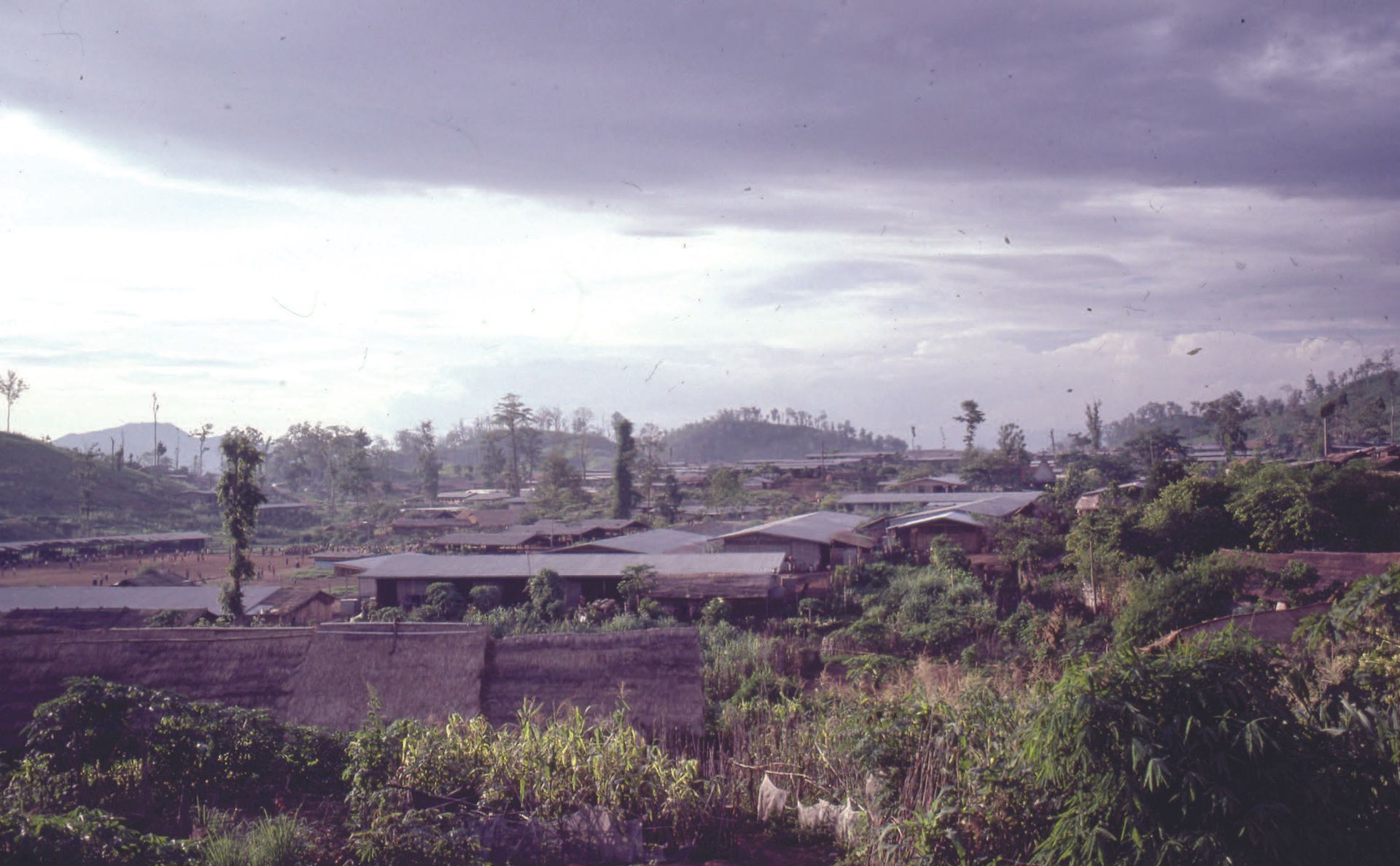
Ban Vinai Refugee Camp
The Thai government chose a location in Loei Province to build a refugee camp called Ban Vinai, named after the general in charge of the area. The camp was mainly built by the Hmong people, who had been flown in from Long Cheng. These refugees, who were skilled in survival and building from their time in Laos, cleared the jungle and created the foundation for Ban Vinai Refugee Camp. In January 1976, the first group of 100 families, led by Colonel Xay Dang Xiong, was moved from Nam Phong to Ban Vinai, starting the camp's rapid growth.
Ban Vinai eventually became a huge complex with eight separate sections, housing tens of thousands of refugees. The camp was so large that a grim joke among the residents was that when someone died, they would "go to rest at Camp Nine." This dark humor turned into reality in 1982 when the camp became so overcrowded that the Thai authorities had to dig up bodies from the cemetery to build a new section of the camp on that site, which became known as Camp Nine. The expansion of Ban Vinai and the hard work of its residents showed both the tough conditions they faced and their determination to build a community despite the challenges.
At its peak in 1986, Ban Vinai held 42,000 Hmong refugees, which is about the same number of people as the combined Hmong populations of Fresno and Merced, all crammed into just two square miles of mountainous land. Life in the camp was difficult and cramped; families often shared tiny bamboo huts, usually only about ten square feet in size. Many refugees had spent all their money and belongings to bribe boatmen and Thai border officers to escape Laos, leaving them with almost nothing to survive on once they arrived at the camp.
The United Nations High Commissioner for Refugees (UNHCR) provided some help, but it wasn't enough for everyone. Because of this, many refugees had to find work outside the camp to survive. Every morning, women and children waited in long lines, holding metal cans and pails, to get their ration of water. To help with the growing population, the UNHCR built long rows of tin-roofed houses for more living space, and other international aid groups provided essential supplies. Despite these efforts, many families still struggled and had to work or rent small plots of land to grow vegetables and herbs to get by. Children went to makeshift schools, trying to keep some sense of normal life.
However, the overcrowded conditions, poor sanitation, and lack of food led to frequent disease outbreaks. Dr. Mace Goldfarb, who worked in the camp, treated many patients with tuberculosis, pneumonia, diarrhea, and skin infections, calling it "a time of great sorrow." Death was a constant part of life in the camp, with funeral ceremonies happening throughout the day and night, often accompanied by the sound of drumbeats and the mournful music of bamboo instruments like the qeej.
Despite all these difficulties, the Hmong community in Ban Vinai remained well-organized and strong. The camp was divided into nine sections, each with its own leaders and representation. Hmong leaders kept their traditional roles, and the camp's New Year celebrations were lively events, with parades showcasing the unique culture of each clan. These celebrations and the strong sense of community helped keep the Hmong heritage alive and provided some comfort during a very challenging time.
Contact Us
2236 N Fine Ave #101
Fresno, CA 93727
United States

This work is licensed under a Creative Commons Attribution-NonCommercial-ShareAlike 3.0 Unported License
All Rights Reserved | Hmongstory Legacy
